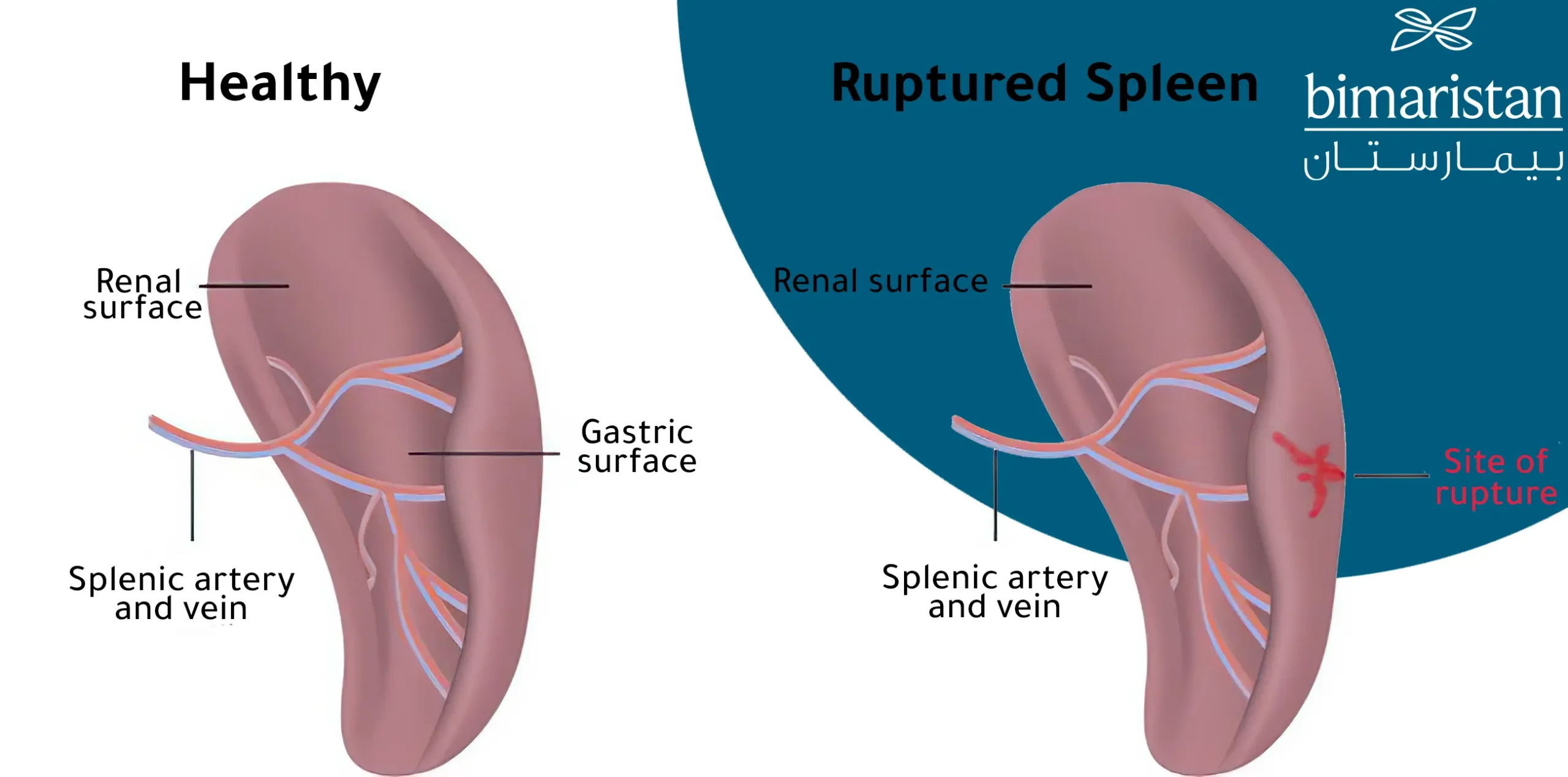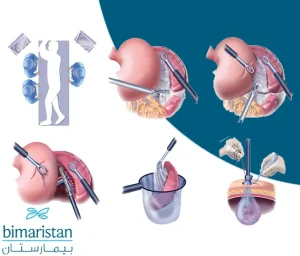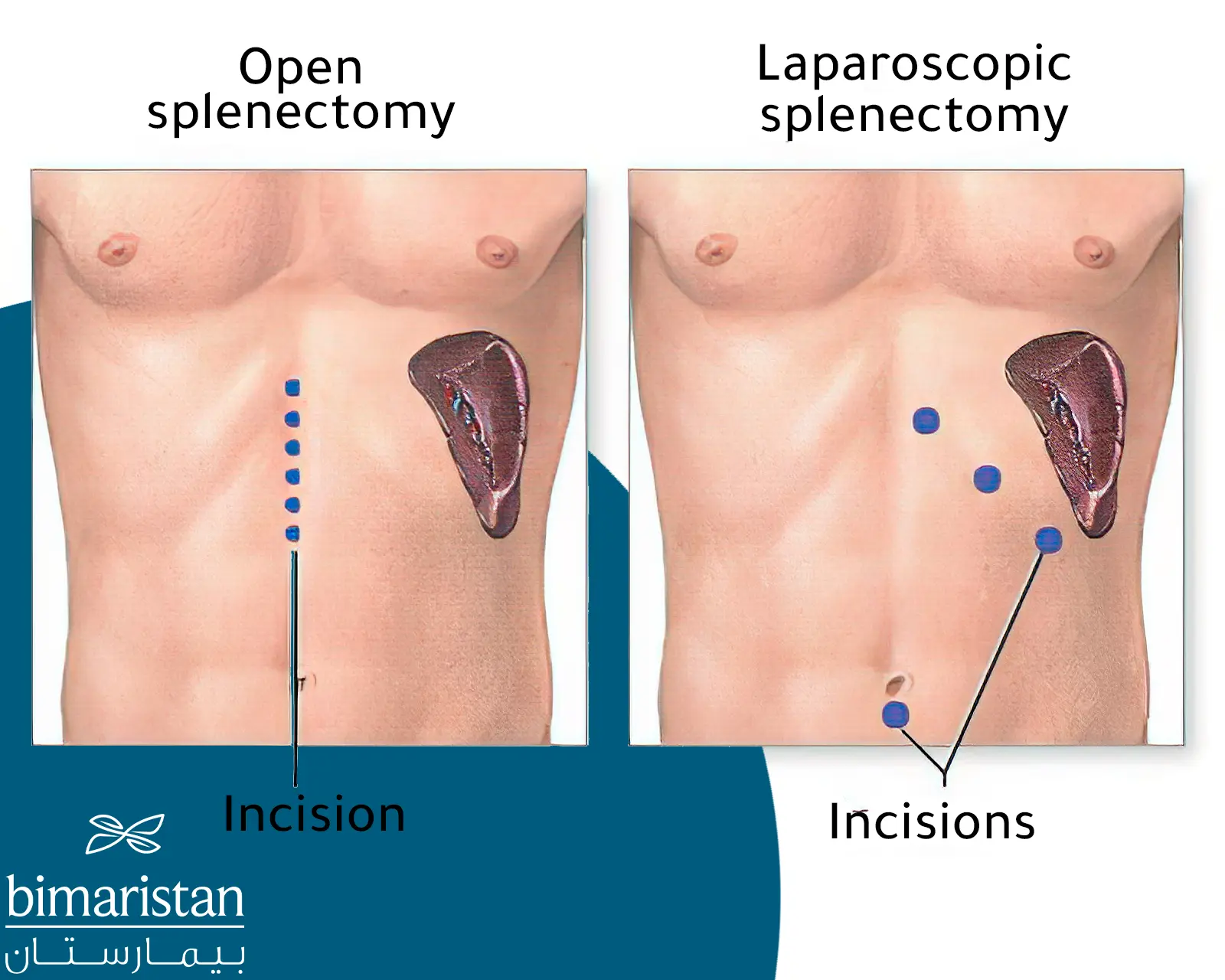Splenectomy is a surgical procedure to remove the patient’s spleen, especially in blood diseases, and It is commonly performed using laparoscopy in Turkey.
Splenectomy is considered an emergency procedure, necessitating quick spleen removal in specific injuries such as accidents and stabbings. However, in some cases, the procedure can be delayed significantly if the patient’s health condition stabilizes.
What is a splenectomy?
Splenectomy is a procedure performed under general anesthesia (intravenously or inhalation) to completely remove the spleen from the body or, at times, perform partial splenectomy.
Surgical removal of the spleen reduces the need for blood transfusions and treats localized symptoms resulting from splenic enlargement, such as pressure on the intestines and stomach. Sometimes, spleen removal is carried out as part of other surgical procedures, such as total gastrectomy, distal pancreatectomy and splenectomy
Splenectomy causes
Numerous reasons may necessitate the removal of spleen surgery, especially in life-threatening cases or those significantly impacting daily routines despite undergoing other treatments. The primary reasons include:
Traumatic Causes
Severe trauma to the left rib cage or abdomen can result in a torn and painful spleen, leading to life-threatening internal bleeding, requiring urgent intervention for splenectomy.

The most common traumatic causes are car accidents intense sports injuries to the abdomen or chest, followed by open traumas such as stabbings and gunshot wounds, necessitating rapid patient transfer to the hospital for organ removal or mass removal whenever necessary.
Hematologic Causes
The spleen is closely associated with the body’s blood components. It is crucial in regulating cell count (including red and white blood cells and platelets) and eliminating damaged and aged red blood cells. Consequently, it is affected by various blood disorders, including:
- Idiopathic Thrombocytopenic Purpura (ITP): an autoimmune disorder where the spleen produces antibodies attacking natural platelets, negatively affecting blood’s ability to clot. We can perform splenectomy for ITP treatment.
- Thalassemia major (especially severe cases): a genetic disease leading to abnormal red blood cells, causing the spleen to work harder, ultimately resulting in its enlargement and pressure on adjacent structures, necessitating surgical removal of the spleen.
- Sickle Cell Anemia: the spleen may cease functioning and shrink, known as an auto-splenectomy.
- Hereditary spherocytosis.
- Hereditary elliptocytosis.
Vascular Causes
Any damage to the splenic blood vessels can mandate spleen removal, particularly the occurrence of aneurysm (dilation) in the splenic artery, as well as the formation of clots in these vessels.
Infectious Causes
Especially in cases where an abscess (pus-filled cavity) forms and cannot be treated without spleen surgery removal after acquiring an infection.
Cancerous Causes
The most common cancerous reason necessitating splenectomy is chronic lymphocytic leukemia, in addition to Hodgkin lymphoma and non-Hodgkin lymphoma. Conversely, cancer can spread from various parts of the body, particularly neighboring organs (stomach, pancreas, colon, and liver) and sometimes from the breast and lungs.
Other Conditions
Splenomegaly can occur in various diseases such as liver cirrhosis, chronic liver fibrosis, and rheumatoid arthritis, resulting in low platelet count and necessitating laparoscopic splenectomy in cases of mild splenomegaly, in addition to pressure on adjacent organs.
Before Splenectomy
The procedures followed at this stage vary depending on the condition (whether it is life-threatening or not). Patients undergoing removal, like other surgical patients, are required to undergo various tests such as hemoglobin and complete blood cell count.
The patient’s vital signs (blood pressure, pulse, oxygenation, respiration, temperature) are also measured to ensure their stability. Patients must also refrain from eating or drinking on the morning of the operation for at least 6 hours.
Several vaccines are administered before the operation to prevent infections after spleen removal, especially vaccines against type B influenza, pneumococcus, and meningococcus.
Splenectomy procedure in Turkey
In the past, this procedure was performed using open surgery. However, advances in medicine have made it possible to perform spleen removal using laparoscopic techniques in Turkey.
splenectomy surgery
After the patient is anesthetized, the surgeon creates a large incision below the left rib cage. Then, the layers under the skin and muscles are dissected, providing a wide working space for the surgeon to remove the spleen easily.
The surgeon ligates the splenic vessels at the upper border of the pancreas and separates the pancreas from the splenic venous vessels. If blood clotting is acceptable, there is no need for wound drainage.
In emergency splenectomy, the surgeon follows a midline incision, which is faster and allows access to all encountered lesions. However, this approach has numerous drawbacks, including a high risk of bleeding and delayed wound healing, leading to a more extended hospital stay.

laparoscopic splenectomy
Recently, laparoscopic splenectomy has shown remarkable results in the medical field. During this procedure, the patient is placed on the right side, with the distance between the rib margin and the costal arch exposed. The surgeon then creates several small incisions (usually four) on the left side of the abdomen. A catheter with a video camera is inserted into one of the incisions, providing visual guidance. Other surgical tools are inserted through the remaining incisions.
The splenic colic ligament is cut to reach the lower part of the spleen, which is detached from the kidney and diaphragm before introducing a self-opening bag to hold the spleen during the laparoscopic abdominal procedure.
A tube to pump carbon dioxide gas can be inserted through one of the incisions (1 cm) to displace nearby organs, which gives the surgeon a good, direct view of the spleen during laparoscopic abdominal surgery.
An additional trocar is placed near the lower rib margin and a similar distance in the posterior axillary line for blood drainage. It’s important to note that this procedure requires highly skilled surgeons and a well-equipped medical facility. Laparoscopic spleen removal is not possible in severe splenic enlargement, necessitating traditional open surgery in such cases. To inquire about the cost of spleen removal surgery in Turkey, please get in touch with us.

After a splenectomy
The duration of hospital stay and return to daily activities depends on the type of splenectomy procedure used. Additionally, the post-splenectomy diet also plays a significant role in recovery.
In the case of traditional spleen removal, the hospital stay is typically around two days and may extend up to six days, while patients undergoing laparoscopic splenectomy may be discharged on the same day or the morning after the procedure.
The recovery period for daily activities is approximately six weeks after a traditional spleen removal but only two weeks following a laparoscopic spleen removal.
Splenectomy risks in Turkey
Complications arising from spleen removal include immediate risks such as bleeding from the slipped ligature, and the most significant concern is opportunistic infections at the surgical site, which carry a high risk of bacterial sepsis if not promptly treated. Therefore, vaccinations, particularly against type B influenza, pneumococcus, and meningococcus, are necessary after spleen removal.
Elevated platelet counts and increased iron levels in patients with anemia are common post-splenectomy. Constriction of the lower left lung lobe is frequent, and there is a risk of atelectasis or lung consolidation, with a threefold increased risk of acquiring pneumonia, meningitis, and blood clotting.
Ultimately, the success rate of splenectomy depends on the patient’s age, the reasons for the surgery, and the patient’s immune system.
Sources:

